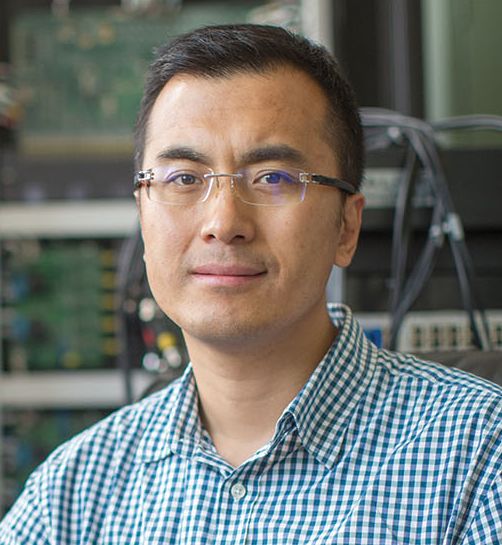According Wenxin Liu, assistant professor of electrical engineering, the future of power is microgrids.
A microgrid consists of multiple distributed generators and loads and can work in both grid-connected- or autonomous- modes.
“Traditional, centralized power grids—where power is generated, transmitted and then distributed to users—are fast becoming a thing of the past,” says Liu.
Power electronics techniques, he continues, have significantly improved the flexibility, reliability and power density of microgrids. However, control of microgrids remains a challenge due to reduced inertia, increased uncertainties and a wide range of operating conditions.
Liu is working on a novel concept: developing what he calls “LEGO-like” power electronic systems that are easily—and inexpensively—customized. This involves developing advanced hardware to improve a system’s capability and potential—in this case, through the development of modular power converters and advanced controller hardware for high-performance component-level and system-level applications.
It also involves advanced software design to unlock hardware potential, improve performance and lower cost.
“What I want is to develop something that is small and modular,” says Liu. “If an application needs higher voltage, we can connect our ‘blocks’ in a series. If an application requires a higher current, we can connect them in parallel. If it requires both, then we can connect them in a series and in parallel. In this way, we can customize the overall system to support a wide range of applications.”
The goal, says Liu, is to reduce the time and expense it takes to construct or customize a equipment or a microgrid.
“With a modular system, if something is not working, it is much easier to identify and replace parts, reducing maintenance costs,” says Liu.
Liu’s Smart Microgrid and Renewable Technology (SMRT) research lab is well equipped for advanced power and control studies. Major equipment include an OPAL-RT real-time simulator, two renewable microgrid testbeds, and two modular multi-level converters.
“My goal over the three years of the project is to demonstrate the concept, designing the hardware and then enabling it with software,” says Liu. “We always have two priorities: first we want to make it work—and then we want to make it work better.”

